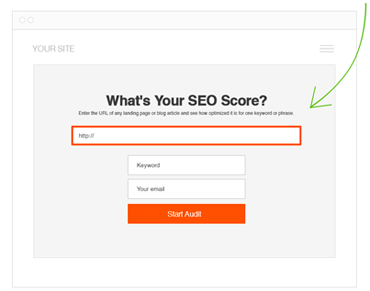Subdomain vs. Subdirectory: Which is Better for SEO?
From an SEO perspective, there are many questions (and opinions) about which is better for search engine optimization: subdomains or subfolders.
The one thing you’re sure to find is that everyone has a different opinion on the ‘subdomain vs. subfolder’ argument.
It’s up to you to decide which structure makes the most sense for your website and SEO. Let’s start with a basic breakdown of each.

What is a subdomain?
WPBeginner defines a subdomain as follows:
“A subdomain is an additional part to your main domain name. Subdomains are created to organize and navigate different sections of your website. You can create multiple subdomains or child domains on your main domain.”
Here’s a common example of a subdomain:
blog.yourwebsite.com
In this example, ‘your website’ is the primary domain and ‘blog’ is the subdomain. You can choose any text for your subdomain, but it should closely match what the page is about.
What about a subfolder?
As the name suggests, a subfolder is a folder beneath another folder that lives under a parent directory, just the same as a subdomain.
However, there’s one big difference: subdomains are also URLs, which allows you to access them in the same manner as any other website address.
A subfolder is simply a path within a specified domain.
The SEO Benefits of Subdomains
Subdomains are good for the organization, but that’s just the start. There are also SEO benefits to using this setup.
To start, a subdomain has the potential to use keywords independently of your URL. Following the example above, blog.yourdomain.com can have its own set of keywords separate from the primary URL.
So this gives you another opportunity to rank for keywords, thus driving additional traffic to your website.
Segment your audience with subdomains
Why send all your traffic to the same domain when you don’t have to?
Take, for example, a company that manages an online store. You sell products and services and courses teaching others how to succeed in the e-commerce world.
Since the audience for each side of your business is unique, it makes sense to use subdomains to separate keywords and drive traffic to the appropriate destination.
Can Your SEO Benefit from Subfolders?
The primary benefit of using subfolders is the ability to control keyword density.
The keywords of each subfolder are part of your main domain, making them a good choice if you want these keywords attached to your primary URL.
This typically makes sense, as you can stack all your keywords in the same URL. The keywords you use on your website notify Google – and other search engines – of what your site is about.
Subdomains vs. Subfolders for SEO: The Final Answer?
Even with all the information above, it’s difficult to state that one is better than the other officially.
Some studies state that subfolders are best for SEO, as different search engines use different metrics. Some studies show why subdomains are the right approach.
Subdomains allow you to separate content and website areas based on a theme. Tracking metrics via UTM tags or a tool such as Google Analytics is also beneficial.
So, for now, this decision is based on the current structure of your site, your SEO goals, and your preferences.
However, if we had to choose one, we’d say that choosing a subdomain structure is the way to go.
What are your thoughts on the subdomain vs. subfolder discussion? Do you have a strong opinion on one or the other? Share your thoughts on why in the comment section below.
 August 29, 2021
August 29, 2021



Yes I agree. I use subdomain to target a little different market. Let say if I sell bicycles. My main domain sell bicycle but one of my subdomains can have sport / biking activity keywords. Another subdomain can have biking tracks keywords.
As for subfolders, I use to “intensify” dan “diversify” the main keywords.
Thank you, Charlie, for easy to understand explanation. Subfolder and keyword density are new to me. It is worth to take a look at it more closely.
Great! Glad it was helpful. It’s always somewhat of a confusing subject with a lot of different options.